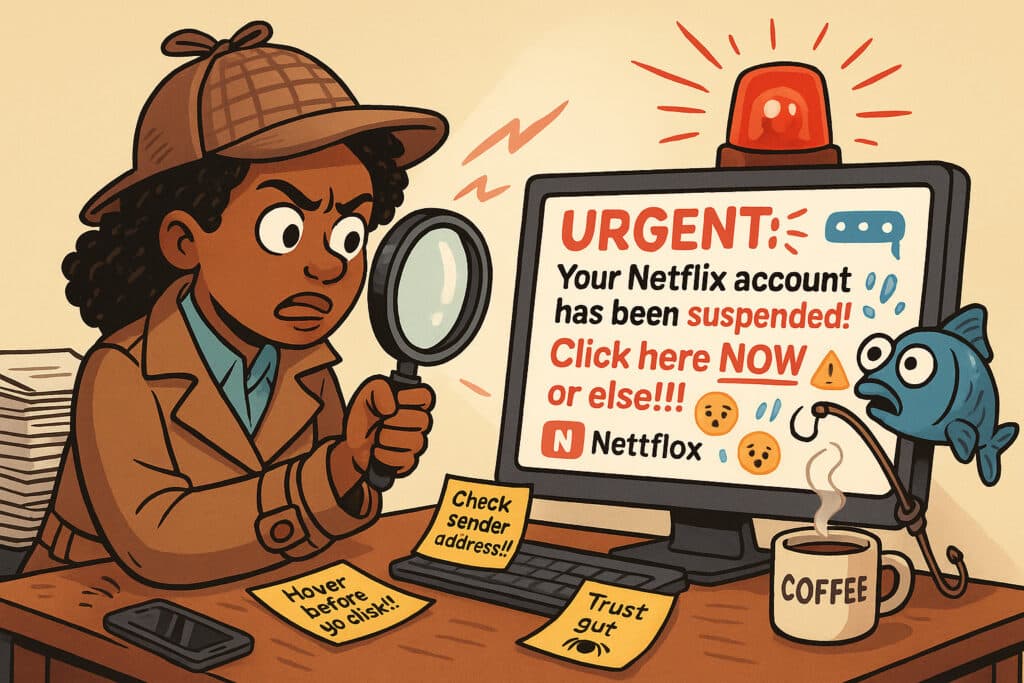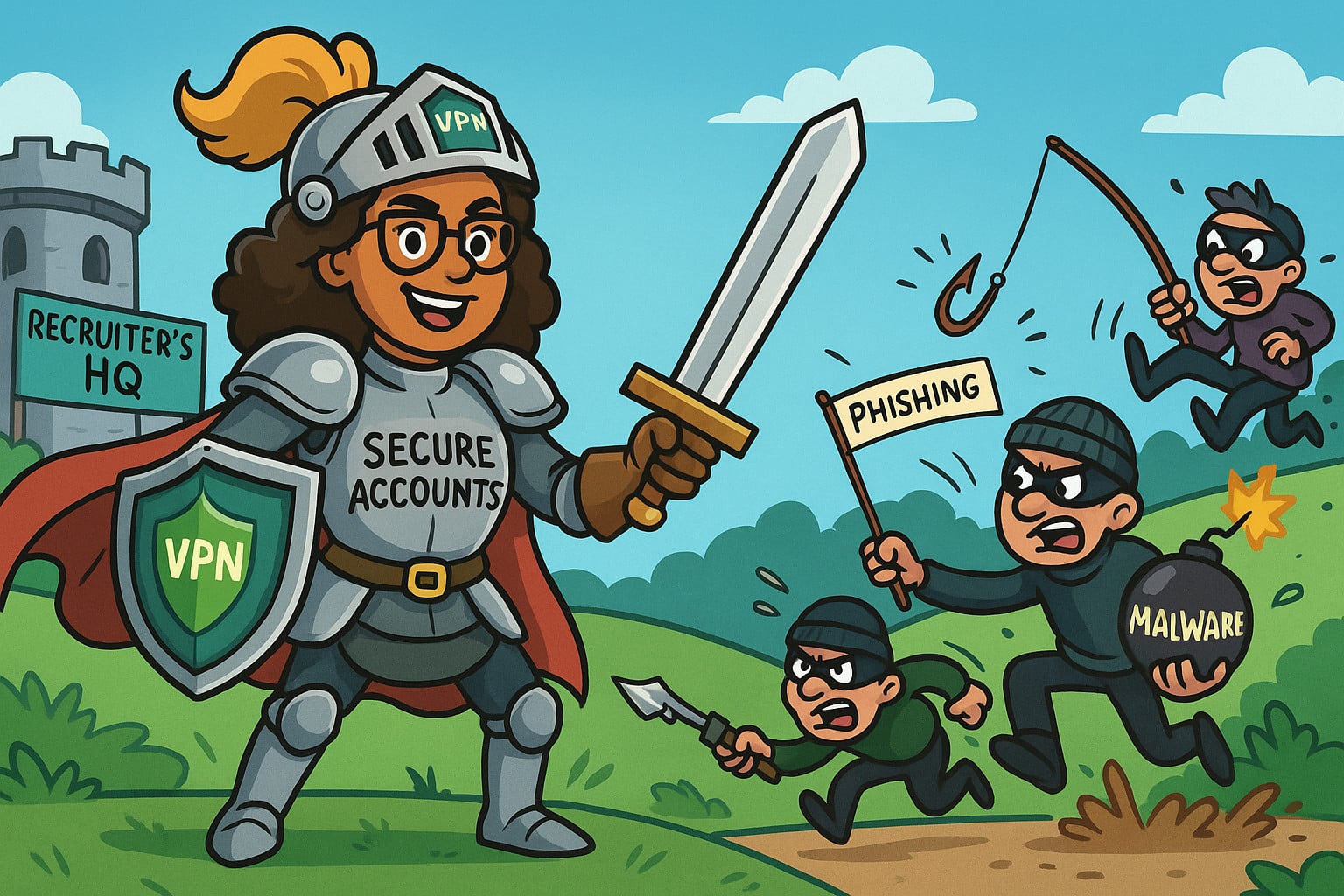How Can You Identify a Phishing Email and Other Sneaky Scams
These days, our inboxes and phones are like buzzing beehives — there’s always something going on. And that’s exactly why scammers love them. Phishing is still one of the oldest tricks in the book, but it works because it preys on what makes us human: our curiosity and our tendency to trust.

At its heart, phishing is about tricking you into handing over personal stuff — like your credit card info or login credentials — usually by pretending to be someone you know or a brand you trust. Whether it’s a fake email from your “bank” or a text from a “delivery company,” these crooks have gotten really good at looking legit.
So, how do these phishing emails work?
Imagine someone sending you a story so convincing you don’t think twice before clicking. They’ll say your package is stuck, your Netflix account is on hold, or your bank needs you to “verify” something urgently. And boom — one click, and they’re in.
These emails look scarily real sometimes. Scammers spoof addresses, copy logos, and even match the tone of actual customer service messages. If they get what they want, they might drain your bank account, hijack your email, or sell your info to other shady characters.
👉 Read this post to find out how to stay secure
Red flags to watch out for
I like to think of this as playing digital detective. Here’s what I always check before clicking anything weird:
- Check the sender’s email address:
- If the email says it’s from PayPal but the address is
paypal-support123@gmail.com, run for the hills. - Look for funky spellings — things like
amaz0n.comwith a zero instead of an “o” are classic traps. - On your phone? Tap on the sender’s name to see the full email address. On desktop, hover over it. You might find some surprises there.
- If the email says it’s from PayPal but the address is
- Generic greetings:
“Dear Customer”? “Dear User”? Nah. If a company really knows you, they’ll usually use your name. That said, spear phishing attacks (the hyper-targeted ones) might include your name, so don’t let that alone fool you. - Scary urgent messages:
Ever gotten an email screaming “ACT NOW OR YOUR ACCOUNT WILL BE CLOSED”? Total scam energy. Scammers love to freak you out so you’ll act fast without thinking. - Weird grammar and typos:
This one’s getting trickier thanks to AI tools, but many phishing emails still have awkward phrasing or random errors. If something reads like it was run through Google Translate twice, it’s probably bogus. - Random links and attachments:
Hover over links before clicking (or long-press on your phone). If the actual URL doesn’t match where it says it’s going, don’t touch it. And attachments? If you weren’t expecting one, don’t open it — even if it looks like an invoice or a doc you “need.” - Requests for sensitive info:
No legit company is going to email asking for your passwords or credit card numbers. Period. - Off-brand logos and weird formatting:
Blurry logos, weird fonts, or colors that feel “off”? Another red flag. - Out-of-the-blue messages:
If you suddenly get an email saying you won a prize or need to reschedule a package you never ordered, be skeptical. - Gut feeling:
Honestly, your spidey sense is a solid tool. If something feels fishy (pun intended), it probably is.
For the extra nerdy folks: email headers
I used to geek out over email headers when I worked on the service desk. They’re like a behind-the-scenes travel log for an email, showing where it really came from and which servers it passed through. If you’re up for it, you can dig into the “From” and “Received” fields to sniff out shady routes or mismatched domains.
Beyond email: Smishing and vishing
Phishing isn’t just stuck in your inbox anymore.
- Smishing: That’s phishing via text messages. You might get a text pretending to be your bank saying “Suspicious activity! Click here to verify.” Don’t.
- Vishing: Voice phishing via calls. Someone calls, claims they’re from “tech support” or “the IRS,” and demands money or access. With AI voice cloning getting better, these scams can be scarily convincing.
Same rule applies: Don’t share personal info, and don’t get pressured into acting fast.
What to do if you get a sketchy message
- Don’t click or open anything: Better safe than sorry.
- Verify independently: Find the official contact info yourself (Google it or check your bank card), don’t use the phone number or links in the email or text.
- Report it:
- Email: Forward to
reportphishing@apwg.org. - Text: Forward to 7726 (which spells SPAM).
- FTC: ReportFraud.ftc.gov.
- Email: Forward to
- Delete it: Once you’ve reported, get it out of your life.
What if you already fell for it?
Look, it happens. Don’t beat yourself up. Here’s what to do:
- Change your passwords ASAP, everywhere you reused them.
- Turn on multi-factor authentication if you haven’t already.
- Run a security scan on your device.
- Check your bank and credit card statements like a hawk.
- Tell your IT team or bank right away if it involves work or money.
- Report identity theft at IdentityTheft.gov if it went that far.
Keeping yourself (and your company) safe
- Keep your software updated automatically.
- Back up your stuff regularly.
- Join security awareness trainings if your company offers them. If not, poke your boss to start one.
- Use email filters and authentication tools to block the worst of the junk.
👉 On this post you will find more tips to stay secure
Phishing scams are always evolving, but you don’t have to be an easy target. Stay sharp, trust your gut, and keep talking to others about it — you’d be surprised how many folks don’t realize how sneaky these attacks can get.
Oh! And if you want to test your skills in a fun way, check out Google’s phishing quiz here. It’s surprisingly eye-opening — and kinda addictive.
Stay safe out there!

